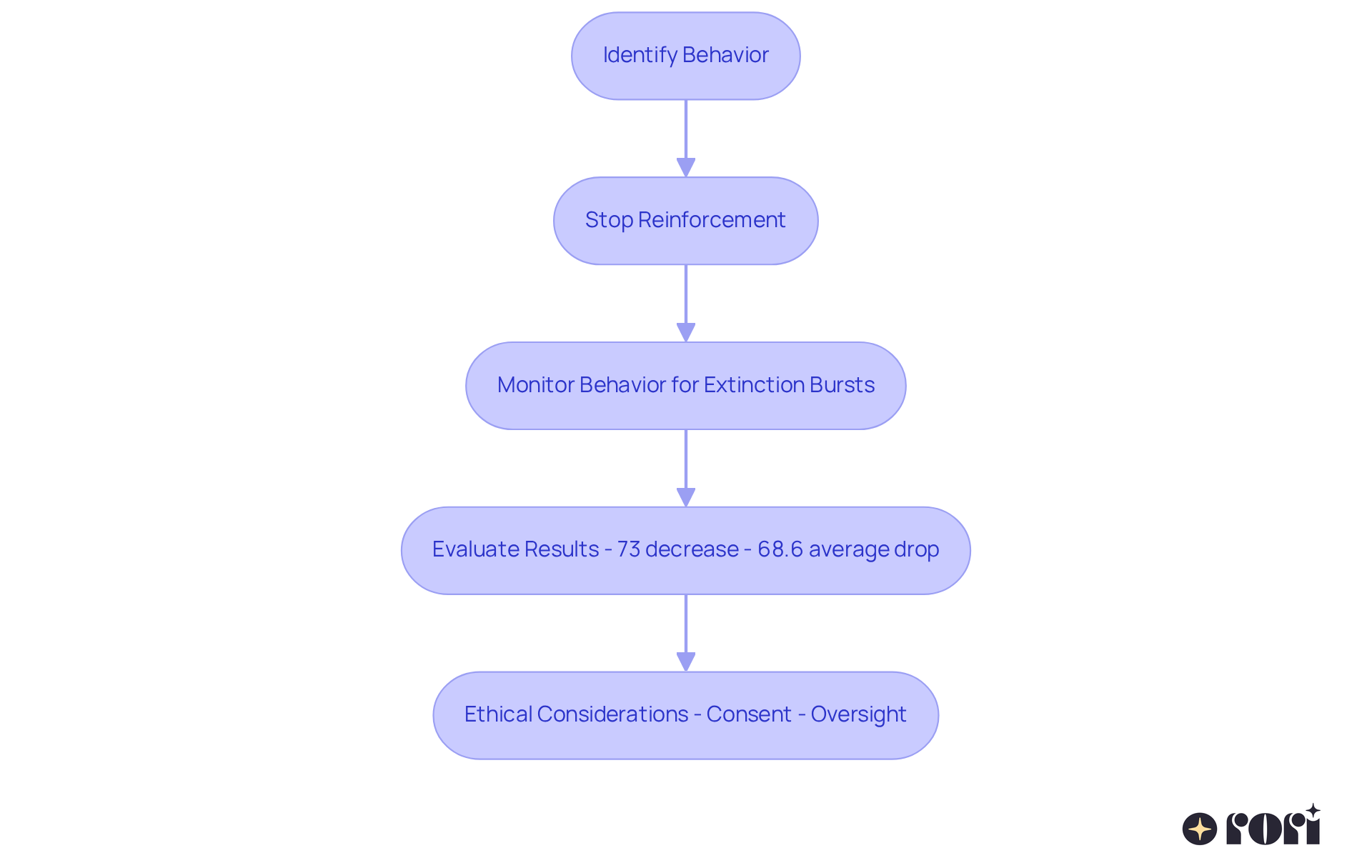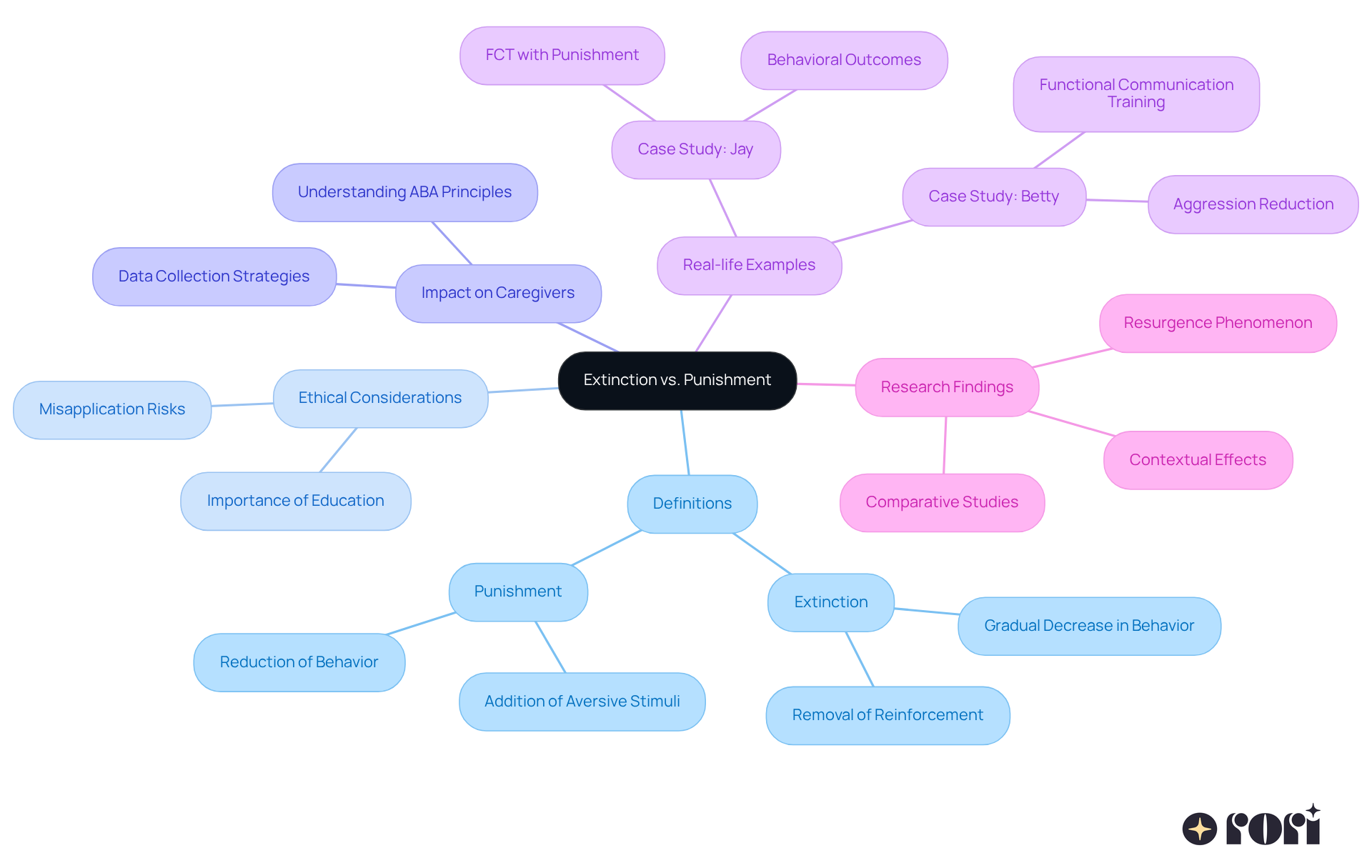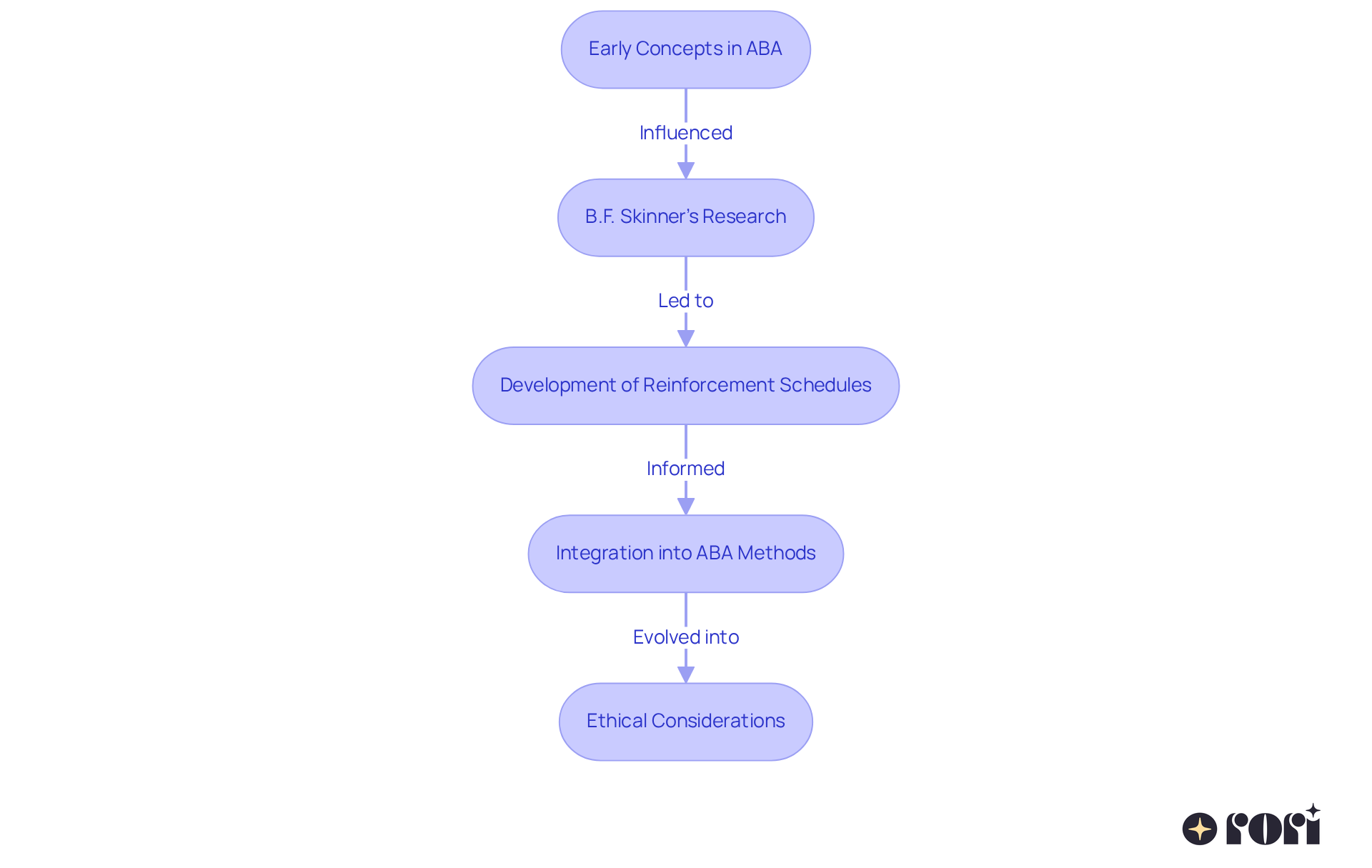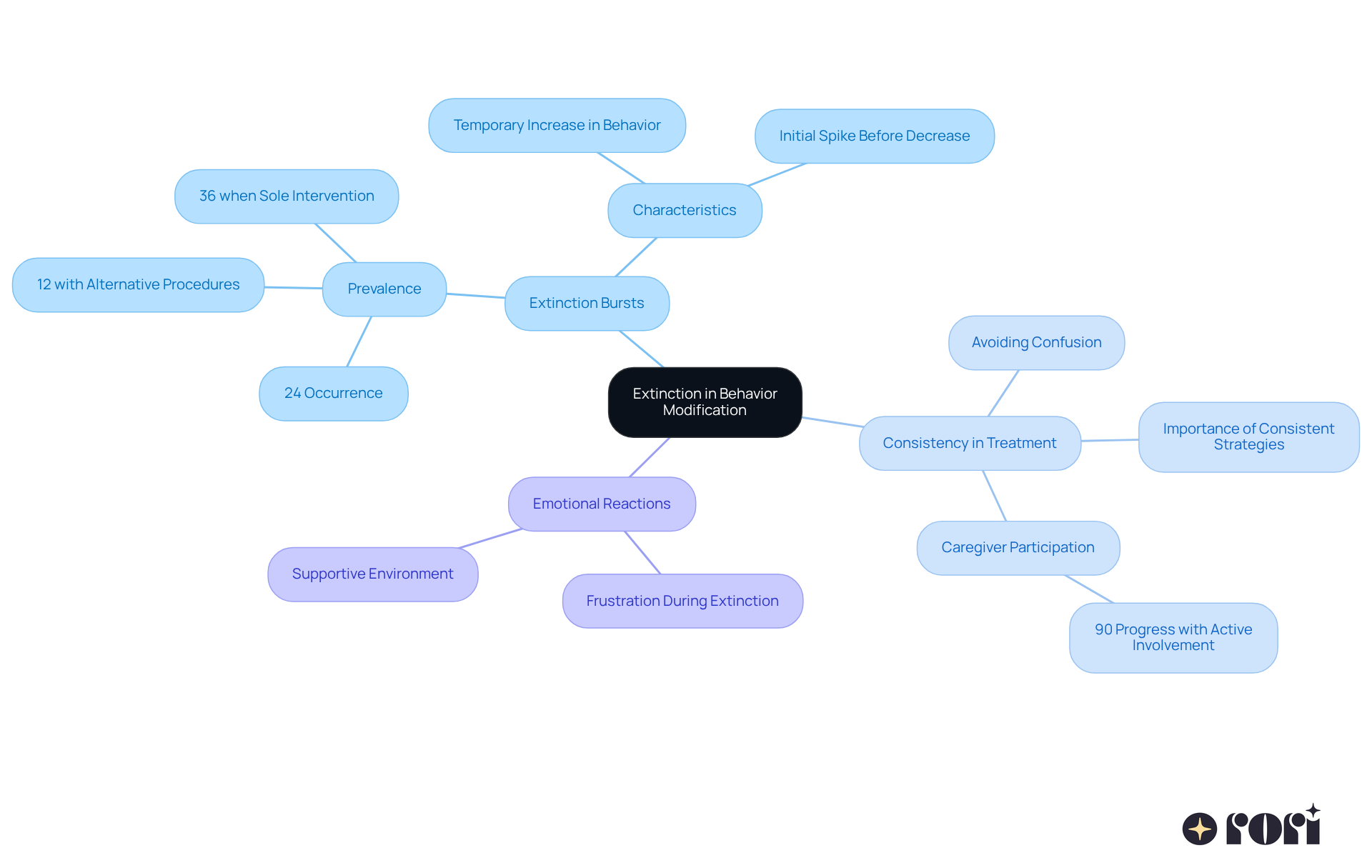This article dives into a common question many parents have: Is extinction in Applied Behavior Analysis (ABA) therapy considered a punishment procedure? The good news is, it’s not! Instead, extinction is all about removing the reinforcement that keeps certain behaviors going. This distinction is crucial because it highlights how extinction can effectively reduce those pesky undesirable behaviors without bringing any negative consequences into the mix.
Let’s explore this together! Imagine your child has a behavior that’s become a bit of a challenge—like throwing tantrums to get attention. Instead of punishing them, which can feel harsh, extinction focuses on not giving attention when the tantrum occurs. This way, the behavior is less likely to happen again, all while keeping the environment positive and supportive.
By understanding this difference, you can feel more confident in using ABA techniques. It’s about creating a nurturing space where your child can thrive without the fear of punishment. We’re here to help you every step of the way, so don’t hesitate to reach out if you have more questions!
Understanding behavior modification in Applied Behavior Analysis (ABA) therapy can be quite a journey for parents. 🌟 Many might think of extinction as a form of punishment, but it’s actually quite different! Instead of focusing on negative consequences, extinction is all about removing reinforcement for undesirable behaviors.
This article will take a closer look at extinction and how it serves as a powerful tool for reducing behaviors that we often want to change, especially in children with autism. But here’s a thought: can we clearly distinguish between extinction and punishment? And what ethical considerations should we keep in mind to ensure our interventions are effective yet compassionate?
Let’s explore this together! We’re here to help you every step of the way!
In Applied Behavior Analysis (ABA) therapy, extinction is a key concept that many parents find intriguing. It’s all about reducing or even eliminating a specific behavior by stopping the reinforcement that kept it going in the first place. For instance, if a young child has learned that throwing a fit gets them attention, simply ignoring that outburst can lead to a gradual decrease in such behavior. It’s important to remember that extinction isn’t punishment; it’s more about removing the reinforcement.
Research shows that extinction-based interventions can significantly help children with autism. In one study involving 156 students across 12 schools, these interventions led to an impressive average decrease of 73% in disruptive behaviors within just six weeks! Another interesting finding was from various applications of Functional Communication Training (FCT), which achieved a 90% reduction in problem behaviors in 44% of cases, with an overall average drop of 68.6%.
Real-life examples highlight the effectiveness of these strategies in autism therapy. In therapeutic settings, professionals have successfully used extinction to manage behaviors like verbal protests during sessions and actions aimed at escaping skill-building activities. These instances show just how adaptable these techniques can be in addressing a wide range of challenging behaviors. And just so you know, it’s quite common to experience extinction bursts—about 70% of the time—during the early stages of this process.
At Rori Care, we’re passionate about empowering caregivers with the knowledge and skills they need to support their child’s behavioral goals. We emphasize ABA principles and ensure our strategies align with these goals. Our conduct care engine performs functional activity analyses for target behaviors, creating automatic progress reports for clinicians to review. This hands-on approach fosters a supportive environment, maximizing the effectiveness of the interventions. Plus, our qualified analysts play a vital role in crafting personalized plans for behavior change and skill acquisition.
While the elimination of certain behaviors can be a powerful tool in ABA therapy, it’s crucial to understand that extinction is not a punishment procedure, as it is not the same as punishment. Instead, it raises the question of whether extinction is a punishment procedure aimed at promoting positive behavior changes by removing the reinforcement that fuels undesirable actions. It’s essential that these procedures are guided by ethical principles and professional standards, ensuring proper consent and oversight to minimize any potential risks.
Let’s explore this together! We’re here to help you every step of the way!

While many people think that is extinction a punishment procedure, it is actually quite different! Punishment typically involves adding something unpleasant or taking away something enjoyable to reduce a behavior. On the flip side, extinction happens when we simply stop providing the reinforcement that kept the behavior going. For instance, if a child usually gets praise for a certain action, stopping that praise will gradually lessen how often they do it.
This distinction is so important! The ethical use of extinction raises the question of whether is extinction a punishment procedure, focusing on the idea that it’s not about adding negative consequences; it’s about removing positive reinforcement. When there’s confusion about species loss, it can lead to missteps in behavioral interventions. That’s why clear communication and education are key for practitioners and caregivers alike. By giving caregivers a solid grasp of ABA principles and strategies—like how to collect data—they can play an active role in the intervention process. This ensures everyone is on the same page and aligned with therapeutic goals.
Plus, this knowledge leads to better decision-making and improved behavioral outcomes for our young ones. As Mark Bouton wisely stated, 'Punishment and extinction are both effective methods of reducing instrumental responding, leading to the question: is extinction a punishment procedure that may involve similar learning mechanisms?' Research has shown that the context where these strategies are applied can significantly sway their effectiveness, with studies revealing a strong main effect of context (F(1, 29) = 21.81, p < .001).
Real-life examples, like the function-based treatments for kids such as Jay and Betty, highlight why understanding these concepts is crucial to avoid misapplication in therapy. By empowering caregivers through education, we not only boost their ability to support their child’s behavioral goals but also enhance overall family dynamics. Let’s explore this together!

The concept of elimination in Applied Behavior Analysis (ABA) therapy traces back to the early 20th century, drawing inspiration from the behaviorist theories of B.F. Skinner and Ivan Pavlov. Skinner's pioneering research on operant conditioning provided a foundational understanding of how behaviors can be reinforced or diminished. His insights into reinforcement schedules and the consequences of actions have greatly influenced modern ABA practices, particularly in terms of behavior cessation. Over the years, research has refined the application of elimination, leading to its integration into various ABA methods designed to address challenging behaviors in children with autism.
Skinner's theories emphasized that behaviors could be lessened by withholding reinforcement—a principle that remains vital in today’s ABA strategies. This understanding has evolved into a thoughtful approach that prioritizes ethical considerations and the well-being of those receiving therapy. Nowadays, the elimination of behaviors prompts the question of whether extinction is a punishment procedure, as it is viewed not just as a punitive action but as an essential part of behavior modification strategies, reflecting a deeper understanding of behavioral dynamics. The historical journey of extinction showcases the field's ongoing dedication to evolving and enhancing therapeutic practices, ensuring they are effective and respectful toward the individuals they support.
At Rori Care, we dream of a future where every young person can flourish, and every family has the resources to make that a reality. Our approach combines effective ABA strategies with AI-powered technologies, enabling families and caregivers to play an active role in their child's growth. By focusing on parent training and education, we boost the effectiveness of therapy, leading to informed decisions, better behavioral outcomes, and empowered caregivers who can provide consistent support at home. Let’s explore this together!

When we talk about whether extinction is a punishment procedure in conduct modification, it’s all about systematically withholding reinforcement. This can sometimes lead to what we call an extinction burst, where you might notice an initial spike in the undesired behavior before it starts to decrease. Imagine a child who used to get attention for being disruptive; if that attention suddenly stops, those disruptive actions might actually increase for a bit before they begin to fade away. Research shows that extinction bursts occur in about 24% of cases, highlighting why it’s so important for practitioners to use consistent strategies. This helps prevent any confusion and avoids unintentionally reinforcing those unwanted behaviors.
It’s crucial for professionals to maintain consistency when implementing cessation procedures, particularly when considering if extinction is a punishment procedure. If things are done inconsistently, it can create more confusion and might even strengthen the behaviors we’re trying to reduce. Plus, it’s important to be aware of the emotional reactions that can pop up during the extinction process, as this raises the question: is extinction a punishment procedure that can lead to frustration or even more intense behaviors? Understanding these emotional dynamics is key to managing the process with kindness and efficiency, ensuring that the child feels supported as they navigate these challenges.
At Rori Care, we’ve got a behavior care engine that plays a significant role in this journey. It continuously analyzes functional behaviors and creates automatic progress reports for clinicians to review. This means we can offer flexible treatment plans tailored to each child’s unique needs, strengths, and challenges. When suggested hours are fully implemented with active caregiver participation, we see that 90% of children make significant progress! By setting clear, measurable goals and using evidence-based strategies, our skilled behavior analysts ensure that interventions are effective and responsive to each child’s development. And let’s not forget about empowering caregivers with ABA principles and strategies—this enhances their involvement and fosters a collaborative approach to achieving those behavioral goals.
Let’s explore this together! We’re here to help you every step of the way!

Understanding extinction in Applied Behavior Analysis (ABA) therapy reveals its true nature as a method focused on reducing undesirable behaviors by removing the reinforcement that sustains them, rather than functioning as a punishment. This distinction is crucial for caregivers and practitioners alike, as it underscores the ethical and effective application of behavioral interventions aimed at fostering positive behavior changes in children.
The article highlights the significant impact of extinction-based strategies, supported by research demonstrating impressive reductions in disruptive behaviors among children with autism. By emphasizing the importance of education and clear communication, caregivers can actively participate in the therapeutic process, leading to better outcomes and enhanced family dynamics. Moreover, the historical context of extinction showcases its evolution within ABA, reflecting a commitment to ethical practices that prioritize the well-being of individuals receiving therapy.
In conclusion, a deeper understanding of extinction not only clarifies its role in behavior modification but also empowers caregivers to implement these strategies effectively. By fostering an environment of collaboration and informed decision-making, families can navigate the challenges of behavior change with confidence. Embracing the principles of ABA and the mechanisms of extinction can ultimately lead to a more supportive and nurturing environment for children, paving the way for their growth and success.
What is extinction in ABA therapy?
In Applied Behavior Analysis (ABA) therapy, extinction refers to the process of reducing or eliminating a specific behavior by stopping the reinforcement that maintains it. For example, if a child learns that throwing a fit gets them attention, ignoring that behavior can lead to a decrease in such outbursts.
How does extinction differ from punishment?
Extinction is not a punishment; it focuses on removing the reinforcement that encourages undesirable behavior rather than applying a negative consequence. Its goal is to promote positive behavior changes.
What evidence supports the effectiveness of extinction-based interventions?
Research indicates that extinction-based interventions can significantly help children with autism. In a study with 156 students, these interventions led to an average decrease of 73% in disruptive behaviors within six weeks. Additionally, Functional Communication Training (FCT) achieved a 90% reduction in problem behaviors in 44% of cases, with an overall average drop of 68.6%.
What are some real-life applications of extinction in ABA therapy?
Professionals have successfully used extinction to manage behaviors such as verbal protests during therapy sessions and actions aimed at escaping skill-building activities. This demonstrates the adaptability of these techniques in addressing various challenging behaviors.
What is an extinction burst?
An extinction burst refers to a temporary increase in the frequency or intensity of a behavior when the reinforcement is first removed. It is common to experience extinction bursts about 70% of the time during the initial stages of the extinction process.
How does Rori Care support caregivers in implementing ABA strategies?
Rori Care empowers caregivers by providing knowledge and skills needed to support their child's behavioral goals. They emphasize ABA principles and utilize a conduct care engine that performs functional activity analyses for target behaviors, creating automatic progress reports for clinicians. Their qualified analysts also craft personalized plans for behavior change and skill acquisition.
What ethical considerations are important in extinction procedures?
It is crucial to understand that extinction should be guided by ethical principles and professional standards. This includes ensuring proper consent and oversight to minimize any potential risks associated with the procedure.